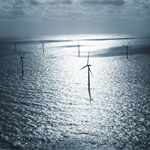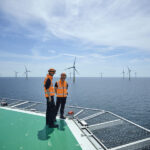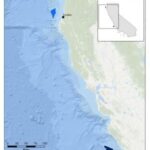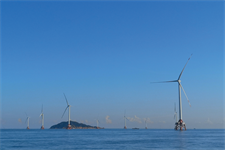‘We need new auction model after Thor offshore wind lottery’ – Wind Denmark
Energy Disrupter
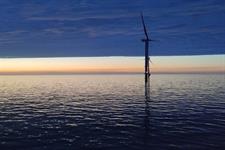
Late last month, German developer RWE secured the rights to build and operate the 1000MW Thor Thor (1000MW) Offshoreoff Central Jutland, Denmark, Europe Click to see full details offshore wind farm in the Danish North Sea.
A lottery system was used to decide the tender, with RWE being one of several bidders offering the lowest price allowed in the tender.
Industry body Wind Denmark would have preferred an auction designed to ensure competition on price alone, its head of policy Martin Risum Bøndergaard told Windpower Monthly.
However, as offshore wind markets mature, there is room for debate about using other criteria to differentiate between bidders, he added.
Contract for difference
RWE was one of several developers willing to bid the minimum price of DKK 0.01/kWh (€0.00135/MWh) for output from the project and to pay approximately DKK 2.8 billion (€375 million) in what effectively amounts to a concession payment for the project.
With no other criteria being specified, a lottery system was used to determine the winner.
The Thor tender was a two-way contract for differences (CfD) auction with caps for the payments to and from the state budget.
The cap on the payment to the state effectively means that if the project’s business case allows you to pay the amount defined by the cap, you can effectively opt out of the 20-year CfD contract and gain revenues on merchant terms in the 30 year concession period, Wind Denmark explained.
The low strike price means RWE will likely end up paying the DKK 2.8 billion cap within two to four years, depending on electricity prices. After that, Thor will effectively operate on a merchant basis.
This lottery system means it was not determined which party was the best-suited to build and operate the wind farm, Wind Denmark’s head of policy, Martin Risum Bøndergaard, told Windpower Monthly. A similar process was also used in Germany’s most recent offshore wind tender, with RWE — again — and EDF securing zero-subsidy contracts.
Tie-breaker
He said that Wind Denmark would have preferred a price-only competition to be used. This should have been a two-way CfD without caps on the total payments made or received by the winning bidder — as used in the UK, which recently launched its fourth CfD tender round — Bøndergaard suggested.
But because the Danish finance ministry wanted a more secure budget, it required a cap on the total payments that can be paid out to the winning bidder.
As a result of the cap, developers that did not want to take on the risk from the CfD contract could bid the lowest price possible and agree to pay the maximum amount of DKK 2.8 billion, in what is a de facto concession payment.
In Europe, most mature offshore wind markets are at a similar stage where new tie-breaking criteria might be needed if competing developers bid for the same price, Bøndergaard noted.
This issue is especially relevant in Denmark, where the government recently agreed to have an extra 2GW of offshore wind capacity by 2030 and plans to decide whether to continue with the “Thor auction model” in future. Any changes would likely be part of a broad energy agreement that is expected for summer 2022, he added.
One option would be to include competition on the payment caps or the concession payments — effectively, who is willing to pay the most. However, Wind Denmark does not support this model.
Some say this would favour those with the deepest pockets, who are not necessarily the best-suited to building the wind farm, Bøndegaard noted. He added that this method would also make projects more expensive, with costs being passed on to society.
“To maximise concession payments governments will need to hold back — or ration if you will — the number of available areas, resulting in an artificially low deployment rate, leading to higher electricity prices for consumers and society as a whole,” he explained.
“Governments should instead aim at maximising renewables deployment and thus, at the same time, minimising electricity prices and maximising greenhouse gas reductions.”
Another option would be to use qualitative criteria to differentiate between bidders, Bøndergaard suggested. Such criteria could include sustainability and biodiversity measures, inclusion of energy storage or power-to-X components.
“There are lots of qualitative criteria you could include,” he said.
Bøndergaard added that the wind industry has succeeded in reducing costs for offshore wind, and this trajectory is set to continue. However, it can still improve sustainability and reduce the environmental impact of wind – for example, by making recyclable blades or using greener steel produced with green hydrogen.



